CarEdge saved me over 4,500 dollars on a brand new Honda Pilot. I can't say thank you enough.
Price intelligence
Find a wide range of vehicle listings with market insights on new and used listings near you.


Help us personalize your CarEdge experience — it only takes a second.
Your answers help us personalize your CarEdge journey — we’ll follow up with tips and next steps that match your buying timeline.


As if anyone needed one more reason to be anxious, some of today’s electric vehicles have inspired a new kind of dread: range anxiety. If you’re new to the world of EVs, you may be wondering why electric vehicle range figures are compared and analyzed meticulously. Maybe you’re even skeptical of EVs because of the sub-300 mile ranges touted as the latest and greatest. The largest automakers are committed to electrification, and American drivers are finding that shopping for an EV is a different experience. There’s no doubt it takes some getting used to. Is the instant acceleration and cheaper fuel worth the learning curve that comes with EV adoption?
Electric vehicle charging stations are still few and far between in most of America. Even charging technologies vary widely from one vehicle to the next. A few new EVs are behind the times when it comes to charging speed, most notably the Chevy Bolt. Others, like the Hyundai IONIQ 5 and Porsche Taycan, are progressing forward with the fastest top-up times in the industry. Thankfully, charging an EV in America is about to get a lot easier in 2022. Billions of dollars in both private and public funding is being funneled into growing the nation’s public charging infrastructure over the next two years. EV range figures will likely become less defining for each new EV that hits the market as charging becomes quicker and easier to find.
As we enter 2022, range is still top of mind for consumers. But estimating EV range is not an exact science. Some vehicles regularly exceed EPA mileage ratings, but many others fall short of the advertised figures. Here’s what consumers need to know about real-world range in today’s growing EV market.

Speed is the number one factor that determines electric vehicle range. The relationship between city/highway driving and range is the opposite with an EV than you’ll find with a combustion-powered vehicle. With a traditional combustion vehicle, better gas mileage is achieved at highway speeds, usually between 50-70 miles per hour. That’s not so with EVs.
EVs are more efficient at lower speeds, even in stop-and-go traffic. Let’s consider the example of the best-selling Tesla Model Y. The 2022 Model Y’s combined range rating is 330 miles, or 125 mpg equivalent. A closer look at the city and highway figures tells an interesting story. On the highway, the US EPA calculates the Model Y’s fuel economy as 131 mpge. Real-world testing at 70 mph finds that the Model Y can make it about 275 miles on a charge. However, in city driving scenarios at lower speeds, the Model Y is good for an astounding 131 mpge, or over 350 miles of range. The story is the same for most other EVs: slower driving around town yields greater efficiency and more range.
Why is speed such an important factor for electric vehicle range? It all comes down to something engineers can’t control, only accommodate: physics. At higher speeds, a vehicle encounters higher friction as it pushes through the air. Friction causes drag, and drag can only be overcome by more force. In this case, the additional force is supplied by higher power output from the electric motors. This is why EV stats often include the ‘drag coefficient’ along with horsepower, torque, curb weight and the rest of the usual metrics for comparison.
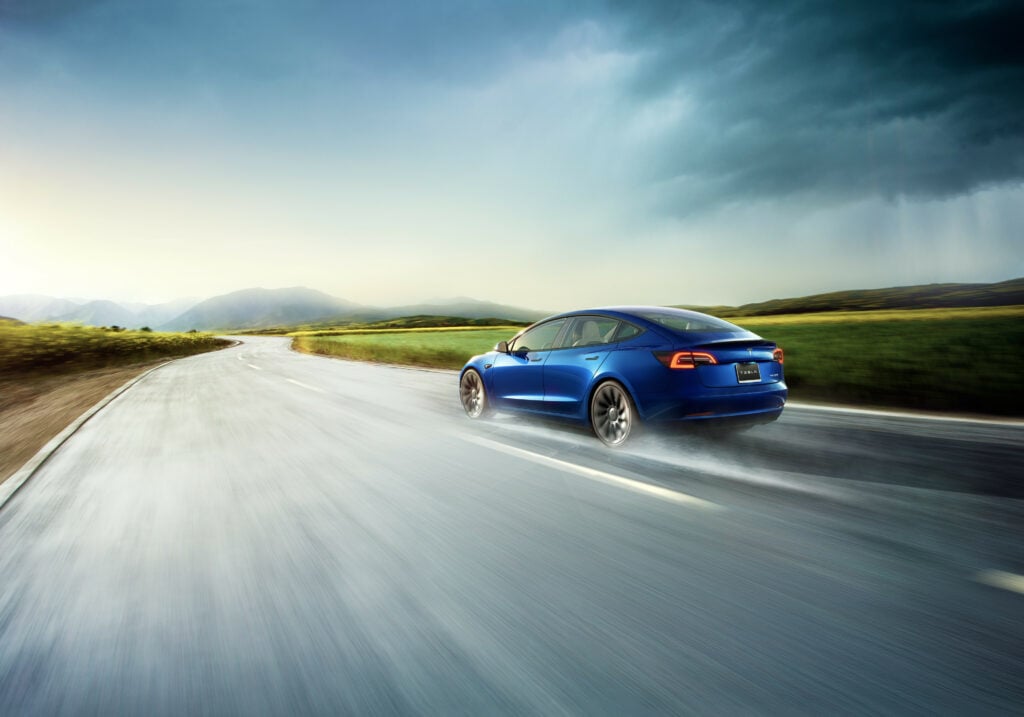
Temperature, wind and even precipitation can all affect electric vehicle range, especially at higher speeds. Every battery-electric motor platform has an ideal operating temperature. Usually, the ideal temperature is somewhere near 70 degrees Fahrenheit. At the ideal temperature, the vehicle can attain up to 115% of its official rated range. That means a Ford Mustang Mach-E rated for 270 miles may actually make it over 300 miles on a single charge in perfect conditions.
Summer heat eats into range somewhat, but winter cold is the real range killer. Effects vary from one model to another, but it’s not uncommon for an EV to lose 30% of its range in freezing temperatures. Why? The cold itself is responsible for about 10% of the range loss, but it’s actually running the heater that demands so much energy, and range takes an even bigger hit. Winter weather is so problematic for EVs that many OEMs are installing heat pumps in their latest models in an effort to reduce range loss in the cold.
As long-haul truck drivers know well, a headwind or severe crosswind kills range for all vehicles, regardless of fuel type. An EV normally rated for 250 highway miles might not even make it 200 with a strong headwind. On the other hand, a tailwind can extend range far beyond the usual performance. Once again, this is similar to what drivers of combustion vehicles will experience.
Rain and snow also reduce range by adding to drag. Think of it this way: any vehicle, electric or otherwise, uses more fuel to literally push through the air as precipitation falls onto it.
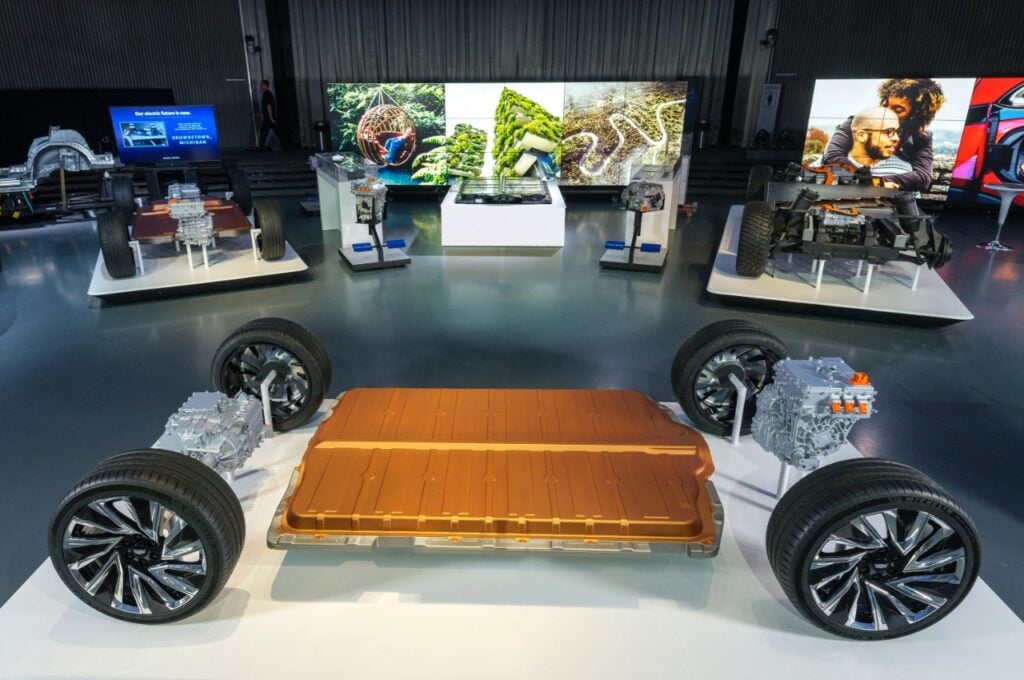
All EVs lose rated range as they accumulate miles on the odometer. It’s just a part of battery wear and tear. The range loss is greatest as the vehicle is ‘broken in’ so to speak. Tesla vehicles lose about 5% of their range within the first 30,000 miles of driving, but range loss slows down afterward. There are many examples of Teslas with 200,000 miles on the odometer that continue to carry 90% of the original range, and almost all retain at least 85% by this point. Other EVs show similar range loss over time.
Battery degradation is unavoidable, but there are measures that EV drivers can take to minimize it. Limiting level 3 fast charging to only when necessary (such as road trips) is the biggest effort anyone can make to preserve the health of their battery. Charging at home on a level 1 or 2 charger to 80% or 90% state of charge is recommended for most EVs. Only when the extra mileage is needed should EVs be fully charged to 100%. One notable exception is the 2022 Tesla Model 3. Tesla has decided to put lithium-iron-phosphate (LFP) batteries in the standard range variants of the Model 3, making this the first EV on the market to withstand regular charging to 100% without notable battery degradation. Perhaps this was a factor in Hertz’s recent decision to buy 100,000 Model 3’s.
With so many factors going into EV range, you might be wondering how one can reliably estimate the range of their EV in real time. Luckily, engineers saw the need for real-time range estimators and got ahead of this challenge. Today’s EVs include smart range estimators (that some affectionately call guess-o-meters) that factor in a number of variables to display the remaining range for the driver. Real-world range figures don’t necessarily make road trips challenging, but for the time being, it is something else for drivers to monitor while charging stations remain uncommon.
Curious as to how your favorite electric vehicles match up in real-world range? The EV experts over at InsideEVs have compiled a database of how every model they’ve tested firsthand performs in the real world. Some EV models far exceed their official EPA ratings, while others come up short. Below are a few of their more notable findings.
Source: InsideEVs

Today’s EVs are expected to retain 85-90% of their original range after 100,000 miles, and possibly even over 200,000 miles. This normal range loss is due to battery wear after repeated charging and discharging cycles. Real world range is something for EV shoppers to bear in mind when comparing models. Remember: If an EV is EPA rated for 250 miles, it will likely only achieve 225 miles on a full charge after 100,000 miles of driving.
The data from InsideEVs shows that some automakers consistently underperform their ratings, while others exceed expectations. Will range anxiety turn buyers away, or will tech and sporty handling compel more drivers to think about going electric? Let us know your thoughts in the comments below. We’ll continue to keep you informed as electrification overtakes the auto industry.
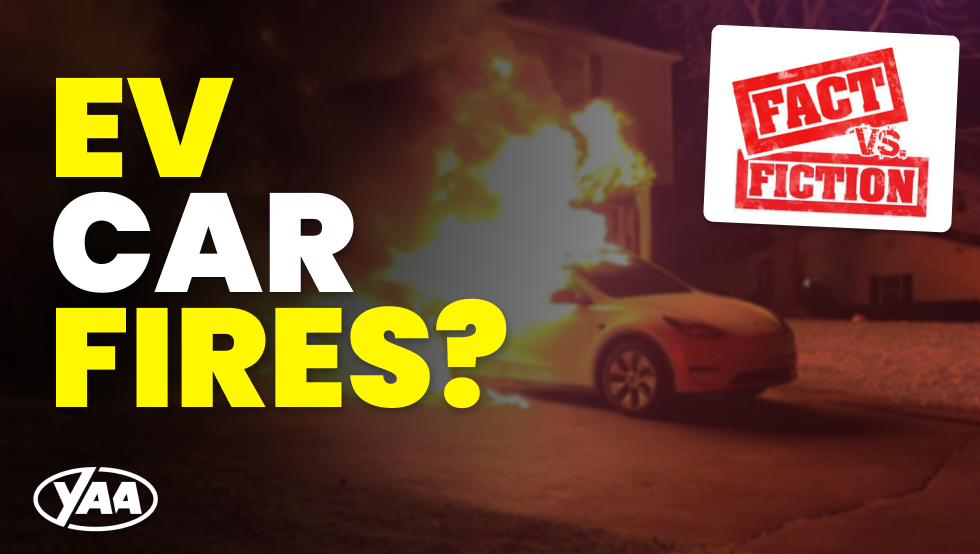
The Chevrolet Bolt’s recent fall from grace has had many EV-curious drivers wondering if EVs are even safe to drive. A quick look at US vehicular fire data makes it clear that car fires were a problem long before EVs (hey Ford Pinto!), but EVs do bring new challenges to automotive safety. Any material that can store enough energy to power a car, whether batteries or gasoline, is capable of volatility and potential safety hazards. However, a closer look at the statistics reveals surprising trends and comparisons. Will the dozens of EVs coming to market in 2022 face the same issues of older models? It’s important to get to the bottom of this. Your advocates at CarEdge will keep you informed with the latest information. Here’s what we know.
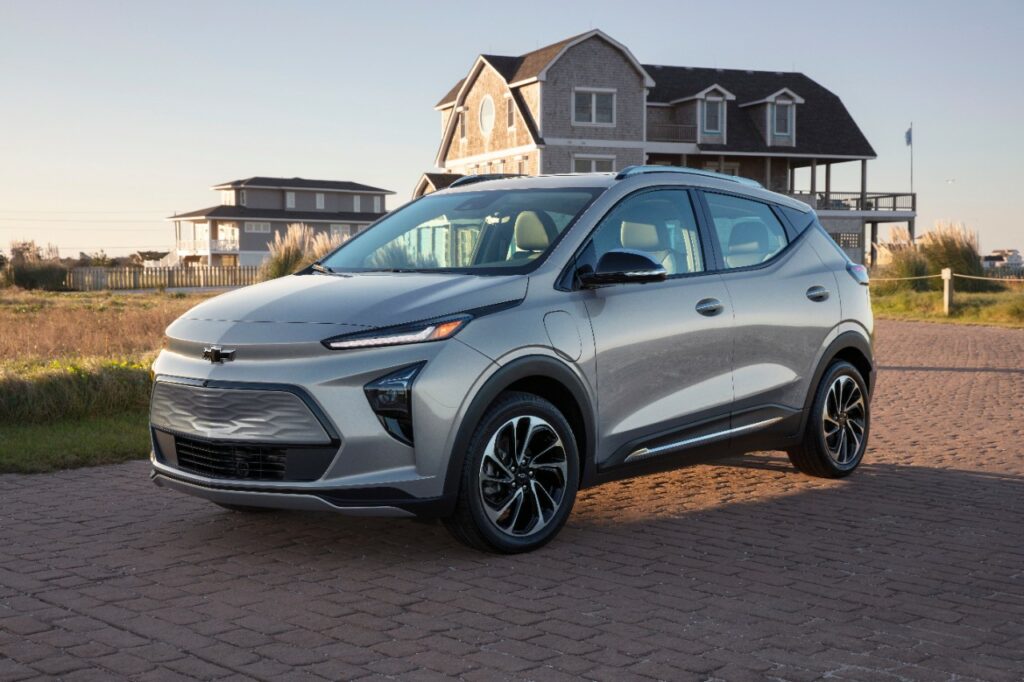
Data compiled by the National Fire protection Association (NFPA) and the US Department of Transportation shows that among all vehicle types, there’s an average of one vehicle fire per 19 million miles driven. Both the NFPA and the Center for Auto Safety say there is not yet a centralized database for electric vehicle fire statistics. In an effort to address the lack of information surrounding EV battery fires, Tesla decided to begin releasing statistics in their annual impact reports.
Tesla’s 2020 Impact Report says that from 2012-2020, there’s been one Tesla fire per 205 million miles traveled. The fact that Tesla models made up 79% of American EV sales in 2020 highlights the relevance of their data. Unfortunately, other automakers haven’t released comparable data (we’re looking at you GM!). We’re hopeful that will change soon.
This comparison doesn’t hide the fact that some EV models have had major problems. Most notably, the ongoing Chevrolet Bolt recall is costing GM and battery supplier LG a few billion dollars to resolve. The Hyundai Kona briefly made headlines with multiple fires. It seems like every Tesla fire makes it into the news. Henrik Fisker’s first shot at launching an automotive brand ended in tears when Hurricane Sandy flooded dozens of early Karma’s with saltwater, resulting in some setting ablaze. EV fires are real, and every one is serious and worthy of proper investigation.
An in-depth study of EV battery fires conducted by the NTSB found that most incidents are caused by a dangerous phenomenon known as thermal runaway. All modern electric vehicles have a thermal management system of some sort. Thermal management keeps the battery operating within the ideal range for performance and safety. Some thermal management systems use liquid coolants, others employ air or refrigerant coolants. But these systems are only designed to work during normal operating conditions. When a battery is punctured or contains manufacturing defects, a short circuit can occur when the anode and cathode come in contact. A shorted circuit can cause rapid thermal runaway. Simply put, if a damaged or defective battery malfunctions, it produces a lot of heat, and may result in a fire.
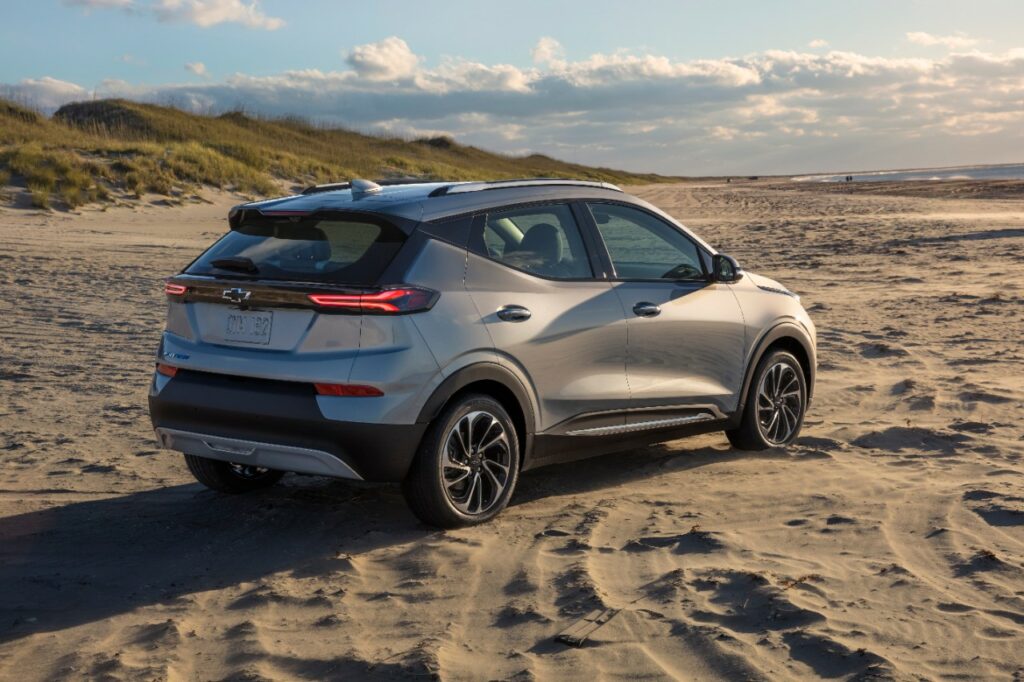
A spokesperson for LG, the battery supplier for the Bolt, shared the cause of the recent fires with Consumer Reports. “GM and LG have identified the presence of two rare simultaneous defects, found in the same battery cell, made during the module manufacturing process.” GM explained that the cause is a torn anode tab and folded separator within the batteries. What it comes down to is two very rare defects simultaneously occurring in the same battery cells.
As of December 2021, GM is just beginning the recall process. Owners of 2017-2019 Bolts will receive an all-new battery pack. Affected 2020-2022 cars will receive replacement batteries for the affected modules. Will the fix take care of the hazard once and for all? Considering the massive engineering effort that has gone into identifying the problem and proposing a solution, Chevy Bolts will likely have undergone even more safety checks than most cars are ever subjected to.
Anytime a Tesla goes up in flames, it’s sure to make the news. But how common are Tesla fires compared to combustion vehicle fires? Engineers (and nervous investors) have looked into every incident, and here is what they’ve found. GLJ Research analyst Gordon Johnson found reports of about 160 Tesla vehicle fires as of 2020, when there were 1 million Teslas on the road globally. That works out to about 0.01% of Teslas being involved in fire incidents, a figure that is less than most other OEMs.

The high publicity of Tesla’s isolated fire events prompted the automaker to address the topic directly in their own 2020 Impact Report. Tesla says there has been approximately one Tesla vehicle fire for every 205 million miles traveled. The report goes on to point out that analyses of combustion-powered vehicle fires conducted by the National Fire protection Association (NFPA) and U.S. Department of Transportation shows one fire for every 19 million miles travelled. As Elon Musk once spouted on his infamous Twitter account, “Not super surprising, given that internal combustion engine cars literally have ‘combustion’ in their name.”
Perhaps one reason Tesla has avoided the major recalls that the Chevy Bolt, Hyundai Kona and some hybrids have faced is the fact that Tesla regularly pushes over-the-air updates to all of their cars. If a thermal management issue is ever discovered by their engineers, for example, it would most likely be solved with a quick software update. Most automakers have yet to implement OTA updates at this level of precision, but Ford, Volkswagen and even GM are coming around to the idea.
Although the data clearly shows that EVs are less prone to car fires than combustion vehicles, there are major safety concerns for the firefighters who extinguish the flames when an EV fire does occur. Firefighters need special training to learn how to safely approach EV-related incidents, but only two-thirds of departments have had the opportunity due to funding constraints.
EV battery fires require A LOT more water to extinguish. Tesla’s First Responders Guide recommends 3,000 to 8,000 gallons of water on hand to put out a Tesla fire. Some fires have needed 30,000 gallons of water to extinguish. Basically, firefighters have to do whatever it takes to cool down the battery, and that’s really hard to do with so much energy densely packed into the pack. Once the fire appears fully extinguished, there’s a chance it could still flare up, even days later. Towing services and junkyards are advised to park damaged electric vehicles at least 50 feet from other vehicles in the yard. As EVs become more popular, that might not be feasible in just a few years.
The National Transportation Safety Board’s (NTSB) review of emergency response guidelines from 36 EV manufacturers found that all had ways to mitigate the risk of high-voltage shocks, but none of the guides addressed how to reduce the risk posed by energy stored in the batteries, such as procedures for minimizing reignition or instructions on where and how to spray water to cool the batteries. Clearly, EV automakers have some serious work to do for the safety of first responders.

Although EV battery fires are still infrequent compared to traditional vehicles, there are still ways to make EVs safer. Solid state batteries are nearly ready for mass production. They promise to revolutionize the automotive industry with extreme efficiency, affordability and incredible duration. The solid electrolyte that lies within is less volatile than the liquid electrolytes used in today’s lithium ion batteries. Solid Power, a leading solid state battery developer, has conducted third-party testing to examine the safety of solid state batteries when they’re exposed to stressors such as puncture or short-circuiting. No fires occurred at all during laboratory testing, only voltage loss.
Over-the-air updates will soon be a feature (or add-on) of most vehicles on the market. OTA updates present an opportunity for automakers to address future battery safety concerns without even needing to issue a full recall. Tesla’s leadership in OTA updates set an example that legacy OEMs are following.
Early on during the rise of EVs (2012-2017), batteries had never before been produced at such high volumes. New manufacturing techniques were needed, and assembly lines had to flush out the usual inefficiencies that affect any new manufacturing process at scale. Now that EV production is maturing and battery suppliers have been at it for a decade or more, engineers, chemists and industrial designers are well-versed in the best practices of making batteries that are both cost effective and safe. Just like with refining and transporting petroleum products, battery production can go wrong if safety and sound engineering aren’t top of mind.
More data is needed, but Tesla’s 2020 Impact Report provides the best look yet at how common EV battery fires are in comparison to non-electric vehicles. Tesla EVs make up 79% of American EV sales, so their data are somewhat representative of the EV market as a whole. The statistics suggest that Teslas are far less prone to fire than combustion vehicles, which is a very different story than one would gather from watching the news. However, Tesla’s overall reliability ratings remain low, which is concerning in its own right.
What about other EV makers? With popular models like the Ford Mustang Mach-E, Volkswagen ID.4 and Hyundai IONIQ 5 hitting the roads this year, we should have more data soon. Every publicized EV fire damages consumer sentiment about the shift to electrification. Surely, automakers investing over $300 billion in EVs would throw everything they’ve got at fixing safety hazards and ensuring that EVs are the safest cars on the road. At CarEdge, we’ll continue to monitor the latest and we’ll bring you any updates as EVs go mainstream in 2022.
We have thousands of EVs (and other vehicles) listed today. Each listing includes industry insights, empowering data and the true TotalPrice that will make buying a car the transparent process it should’ve always been. Check it out here!